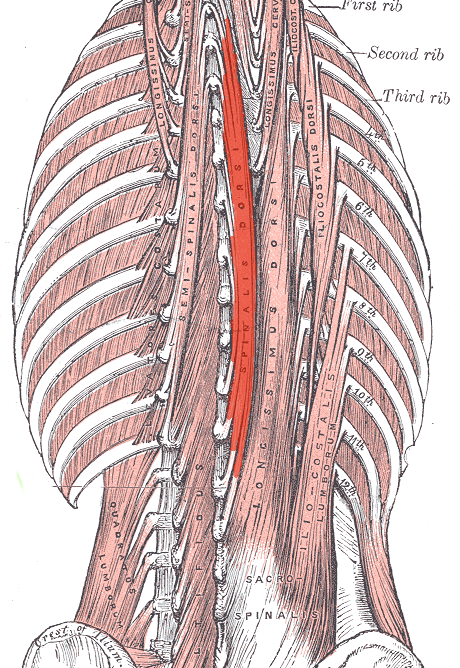A Quick Dose of Back Side Anatomy
Most folks have a vague idea of what's going on in their backs, but let's clarify. In your vertebral column, you have 24 vertebrae: 7 cervical (neck), 12 thoracic (thorax-ribs area), and 5 lumbar. The cervical vertebrae are the most mobile, giving you the ability to turn your neck in many positions. The thoracic ribs articulate with your 12 sets of ribs to protect the viscera, assist in breathing, etc. The lumbar vertebrae are larger, less mobile, and support the weight of the torso.
When viewed from the side, the spine has a series of natural lordatic and kyphotic curves. Poor alignment often distorts these curves into a single C curve.
In between each vertebra is a cartilaginous "invertebral disc," which I mentioned last week in relation to osteoporosis. These discs act as shock absorbers while also helping to maintain the structure of the spine. Misaligned discs can be painful, or not. Many people have slightly herniated discs (meaning displaced) and have no pain or symptoms from it while others have serious issues, including compressed nerves and persistent pain.
Image from Grey's Anatomy of Erector Spinae and intermediate spinal muscles.
Muscularly speaking, there are many layers of muscle stacked on top of each to make up this portion of your posterior kinetic chain (a fancy way of side your backside). Our deepest level of posterior muscles are a series of very small muscles running between individual vertebrae, specifically the transversospinalis muscles. They assist with maintaining healthy curvature of the back, as well as bring the spine into extension, or what we think of as a backbend. The intermediate musculature is what you see here on the right-this series of long cord-like structures, which assist in extension as well as side bending in the spine.
Superficial musculature is often more of what you can see on someone's back side-muscles like the trapezius, latissimus dorsi, etc., both of which play a major role in moving the shoulders and neck, as well as spine. (Lats are a big player in pull ups, and the trapezius often gets very tight and restricted in musicians).
A detailed look at the muscles of the back and shoulders, courtesy of Encyclopedia Brittanica. The left view is the topical view, sans epidermis, and the view on the right peels one layer of back myofascia off to look deeper.
I found this image on the internet, but I have no idea where it came from. I do love it, though!
Your spine moves ultimately in 6 directions- round, extend (hello cat/cow), side bend both sides, and twist both sides. The musculature of your back (as well as the muscles of your front) help support the spine and organs as you make these movements, which help keep the invertebral discs healthy, and lengthen compressed areas in the body. The muscles of your pelvis and abdomen are also incredibly important to postural maintenance and stability, but we'll talk about those another day.
Can you see how if a musician is short in one side of their body, due to an asymmetrical instrument, they might have misalignment and back pain?




